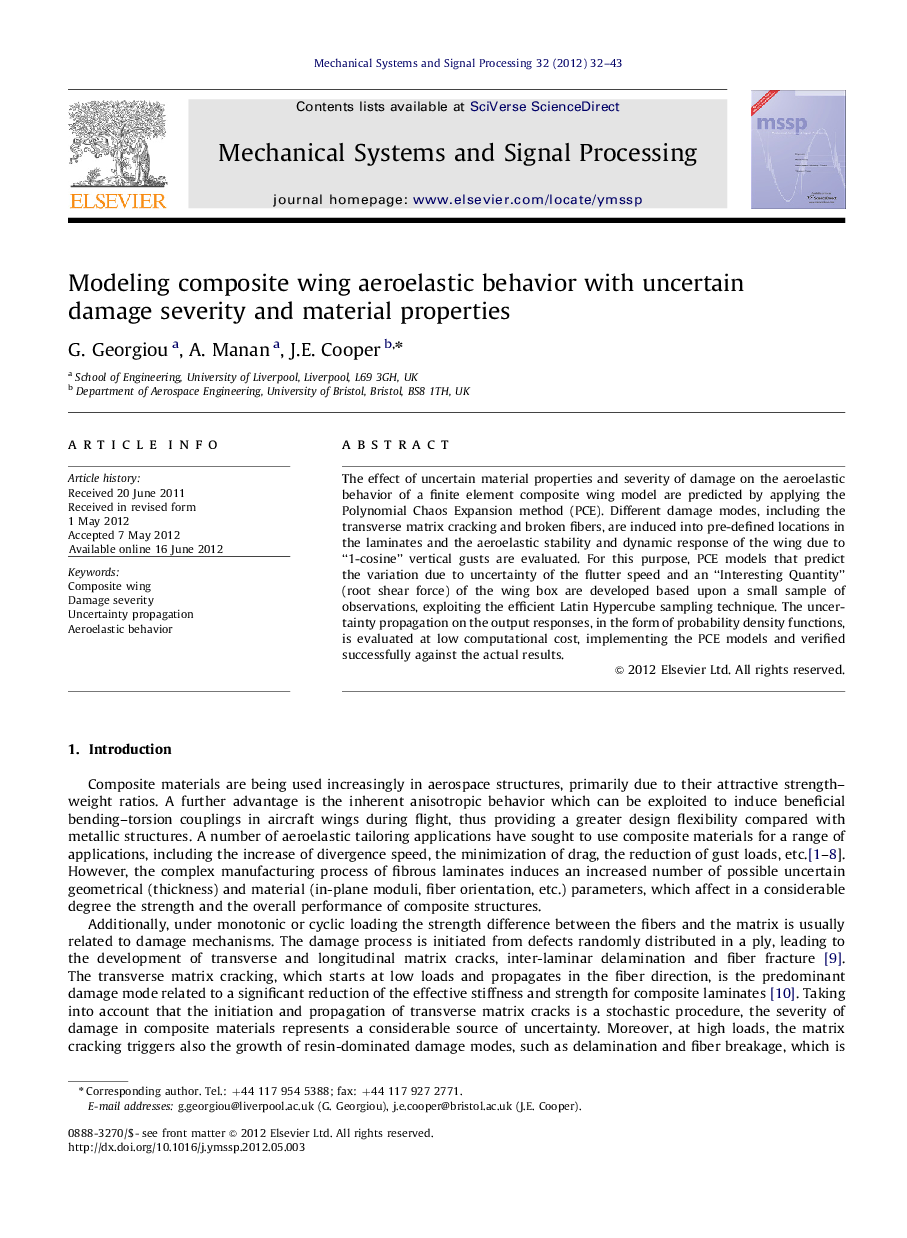| Article ID | Journal | Published Year | Pages | File Type |
|---|---|---|---|---|
| 561364 | Mechanical Systems and Signal Processing | 2012 | 12 Pages |
The effect of uncertain material properties and severity of damage on the aeroelastic behavior of a finite element composite wing model are predicted by applying the Polynomial Chaos Expansion method (PCE). Different damage modes, including the transverse matrix cracking and broken fibers, are induced into pre-defined locations in the laminates and the aeroelastic stability and dynamic response of the wing due to “1-cosine” vertical gusts are evaluated. For this purpose, PCE models that predict the variation due to uncertainty of the flutter speed and an “Interesting Quantity” (root shear force) of the wing box are developed based upon a small sample of observations, exploiting the efficient Latin Hypercube sampling technique. The uncertainty propagation on the output responses, in the form of probability density functions, is evaluated at low computational cost, implementing the PCE models and verified successfully against the actual results.
► An aeroelastic model of a composite wing box with structural damage was developed. ► The effect of variable material properties and damage severity was investigated. ► Probabilistic models based upon the Polynomial Chaos Expansion method were used to map the uncertainty of the flutter speed and gust loads. ► The fiber breakage is the most significant damage mode, whereas damping variations have minor effect. ► The structural variability has a greater effect on the aeroelastic response of the composite wing than that due to aerodynamic variations.
